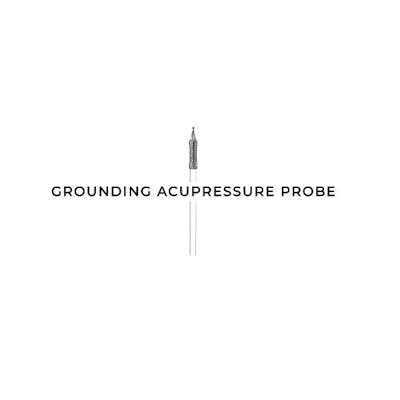Say Goodbye to Tennis Elbow with These Home Treatment Tips
Introduction:
Tennis elbow, also known as lateral epicondylitis, is a common condition that causes pain and inflammation in the outer part of the elbow. It is often caused by repetitive motion or overuse of the arm and forearm muscles. While it is called "tennis elbow," you don't have to be a tennis player to experience this condition. Any activity that involves repetitive gripping and wrist movements can lead to tennis elbow.
If you're tired of dealing with the discomfort and limitations of tennis elbow, you'll be glad to know that there are several effective elbow pain home treatments you can try. In this article, we will explore various remedies and lifestyle changes that can help you say goodbye to tennis elbow and get back to your regular activities pain-free.
1. What is Tennis Elbow?
Tennis elbow is a condition characterized by the inflammation of the tendons that join the forearm muscles to the outside of the elbow. Despite its name, tennis elbow is not exclusive to tennis players. It can affect anyone who performs repetitive arm and wrist motions, such as painters, carpenters, and computer users. The repetitive stress on the tendons leads to small tears and degeneration, resulting in pain and tenderness in the outer part of the elbow.
2. Common Symptoms of Tennis Elbow
Recognizing the symptoms of tennis elbow is essential for proper diagnosis and treatment. The most common signs of tennis elbow include:
Pain or tenderness on the outside of the elbow
Weak grip strength
Difficulty in performing simple tasks like opening a jar or shaking hands
Pain worsening with forearm activity
Stiffness in the elbow
Radiating pain from the elbow to the forearm and wrist
If you experience these symptoms, it's important to take action and implement home treatment tips to alleviate the pain and promote healing.
3. Rest and Protect Your Elbow
One of the first steps in treating tennis elbow is to give your elbow adequate rest. Avoid activities that exacerbate the pain and put stress on the affected area. It's essential to take breaks from repetitive motions and modify your movements to reduce strain.
Additionally, you can protect your elbow by using a brace or splint. These supportive devices help stabilize the affected tendons, relieve pressure, and promote healing. Make sure to consult with a healthcare professional to find the right brace for your condition.
5. Try Over-the-Counter Pain Relievers
Over-the-counter nonsteroidal anti-inflammatory drugs (NSAIDs) can help manage the pain and inflammation associated with tennis elbow. Medications such as ibuprofen or naproxen sodium can provide temporary relief. Follow the dosage instructions on the package, and consult with your doctor or pharmacist if you have any underlying health conditions or are taking other medications.
It's important to note that while pain relievers can provide temporary relief, they do not address the underlying cause of tennis elbow. They should be used in conjunction with other home treatment methods for optimal results.
6. Stretching and Strengthening Exercises
Engaging in specific stretching and strengthening exercises can help alleviate tennis elbow symptoms and prevent future occurrences. These exercises focus on improving the flexibility and strength of the forearm muscles and tendons.
7. Use a Tennis Elbow Brace
Tennis elbow braces, also known as counterforce braces, can provide additional support and relieve strain on the affected tendons. These braces typically wrap around the forearm just below the elbow, redistributing the forces and reducing stress on the injured area.
Wearing a tennis elbow brace during activities that aggravate your symptoms can help alleviate pain and prevent further damage. However, it's important to note that a brace is not a long-term solution or a substitute for proper rest and rehabilitation. It should be used as a complementary measure along with other treatment options.
FAQs about Tennis Elbow
FAQ 1: What are the causes of tennis elbow?
Tennis elbow is primarily caused by repetitive motions and overuse of the forearm muscles. Activities such as playing tennis, painting, typing, or using hand tools can contribute to the development of tennis elbow. Poor technique, inadequate warm-up, and improper equipment can also increase the risk.
FAQ 2: Can tennis elbow heal on its own without treatment?
In some cases, tennis elbow may heal on its own with adequate rest and home treatment. However, it can take several weeks to months for complete recovery. It's important to implement proper self-care measures and consult with a healthcare professional for guidance.
FAQ 3: How long does it take for tennis elbow to heal?
The recovery time for tennis elbow varies from person to person. With proper natural treatment for tennis elbow and adherence to self-care measures, most individuals experience improvement within six to twelve months. However, severe cases may require a longer healing period.
FAQ 4: Can I continue playing sports with tennis elbow?
It is generally recommended to avoid activities that worsen the symptoms of tennis elbow. Continuing to play sports or engage in repetitive motions can delay the healing process and potentially cause further damage. It is best to consult with a healthcare professional for personalized advice regarding sports participation during recovery.
FAQ 5: Are there any exercises that can worsen tennis elbow?
Certain exercises or movements that strain the affected tendons can exacerbate tennis elbow symptoms. These may include heavy lifting, gripping activities, or repetitive wrist extensions. It's important to modify or avoid such exercises during the healing phase. Consult with a healthcare professional or physical therapist for appropriate exercise modifications.
FAQ 6: Can tennis elbow affect both arms?
Yes, tennis elbow can affect both arms simultaneously or develop independently in each arm. Bilateral tennis elbow occurs when both elbows experience pain and inflammation due to overuse or repetitive movements. It's crucial to address symptoms in both arms to ensure proper recovery and prevent future flare-ups.
